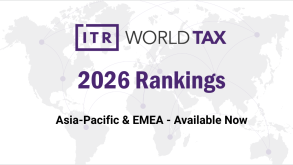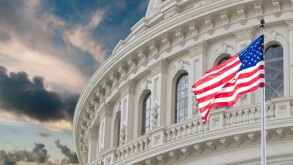The global indirect tax leader of another Big 4 accounting firm recently published a blog post entitled 'Indirect tax: Five global trends'. The article outlined five key trends sweeping the indirect tax landscape. They were:
Value added tax (VAT) and goods and services tax (GST) rates are stable, but they remain high;
Reduced VAT and GST rates and exemptions are making a comeback;
The global reach of VAT and GST is expanding;
Digital tax measures proliferate; and
Tax administrations are embracing technology.
Most tax professionals would doubtless conclude that these are indeed trends in VAT and GST systems around the world. However, they are very 'safe' in their assessment in the sense that they reflect trends that are already clearly evident, or obviously emerging. In other words, are they really insightful or remarkable? Do they really inform an audience of anything they are unlikely to have witnessed already?
The purpose of this chapter, however, is not to critically analyse the blog post, but rather, to beg the question – what are the trends or changes that are likely to sweep indirect taxes beyond what we can already clearly see, and which will emerge as we plot a pathway to 2025? What do these global trends mean for China's VAT system?
The 'here and now' trends
Let's start this exploration with a quick snapshot of the 'here and now'. In succinct terms, throughout the authors' 18-year career practising in indirect taxes, there has never been a time when there has been greater certainty about the future global direction of indirect taxes, at least over the next few years. Consider the following:
First, VAT and GST rates throughout the world are at an all-time high, and there is very little pressure being brought to bear to either increase or decrease them. The general consensus seems to be that rates in the EU have hit a natural ceiling, while those in the Asia Pacific region maybe have greater scope for increase rather than decrease. Therefore any global shift from a rates perspective is unlikely to be seismic, certainly as compared to what took place globally in the period from 2008 to 2015.
In China, the general VAT rate of 17% sits just below the OECD average of 19.18%, but it is considerably higher than the average in the Asian region of around 12.73%. Some rate changes may be expected though, given the State Council's recent flagging that the number of VAT rates in China would be further reduced, following on from the recent removal of the 13% rate. This is not surprising given that multiple rate VAT systems tend to create greater levels of complexity.
Second, from 2016 through to 2018, we will have seen several major economies throughout the world implement a VAT or GST, either for the first time or through the expansion or rationalisation of their existing indirect tax systems – China in 2016, India in 2017, and then on to the Gulf region in 2018, and Brazil (date yet to be fixed). At that point in time, there will be no major economies throughout the world without a VAT or GST system, with the exception of the US, which is a subject touched on further below.
In China, we do have the special administrative regions of Hong Kong and Macau without broad-based indirect tax systems. Macau can perhaps be put to one side because it has alternative forms of indirect taxation, such as a tourism tax, and its major industry of gambling is subject to a special gaming tax (as well as licence fees). However, in Hong Kong, the government's coffers are seemingly pretty full, and with a retail sector struggling due to high rents, there is little political pressure for change. Implementing a VAT or GST would also be seen to change its traditional status as a free port. As such, even if a VAT or GST were to be introduced, it would likely be at a relatively low rate.
Third, in a global context, the period from 2015 through to 2019 (or thereabouts) will be remembered for the proliferation of digital tax measures – whether they are measures to tax the cross-border provision of services that can occur digitally and without the creation of a permanent establishment, or through new measures to tax the business-to-consumer (B2C) importation of goods through e-commerce platforms. The OECD has taken a leadership role here in defining the challenge that needs to be addressed, but perhaps to the frustration of many digital providers, the implementation of its recommendations has occurred in an extraordinarily wide-ranging and seemingly uncoordinated way, except perhaps in the EU, where a 'mini one-stop shop' (MOSS) approach has been adopted.
When the OECD's recommendations were first published, the authors took the view that they were clearly designed with a view to implementation in the EU. However, when applied to countries in the Asia Pacific region they would be problematic, given the absence of any 'one-stop shop', currency controls in place in many countries, VAT/GST systems that fundamentally do not already recognise non-residents, the absence of refunds of excess VAT/GST credits in many jurisdictions, and even the non-implementation of the destination principle of VAT/GST in certain countries. Not surprisingly, China is yet to implement these measures given that it possesses most of the features that make their adoption more difficult than in other countries.
If we wind forward to 2017, many of these concerns are starting to be borne out in reality. Within the Asia Pacific region, we have countries such as Australia and India that are seeking to impose primary liabilities for VAT/GST on platform providers – that is, the parties who provide the infrastructure that facilitates e-commerce sales, either on their own account or as an agent for third party vendors. We have tax jurisdictions such as Japan, Korea, Taiwan and New Zealand, each of which seemingly have adopted the OECD's recommendations more faithfully (with Singapore likely to do so soon) in enacting measures that tax digital supplies of services from non-residents to consumers in those countries, either with a broad tax base or with more targeted measures (at least initially).
As noted, countries such as China and curiously also Malaysia (given its GST system is so new), are yet to implement these measures at all. In our view, this is only a matter of time, for the simple reason that the non-implementation of these measures results in a cost to the revenue and represents a potential threat to the tax base. While in China the B2C cross-border supply of services is technically subject to VAT withholding, the OECD acknowledges that this type of approach results in poor levels of compliance, and is therefore unsustainable.
Outside the Asia Pacific region, we have a number of EU countries such as the UK, Italy, Poland and Romania either implementing, or seriously considering, the adoption of 'split payment' methods for VAT collection, whereby the recipient diverts the VAT included in the purchase price directly to a bank account held for the benefit of the tax authorities. In the Americas, countries like Colombia, Costa Rica and Argentina appear willing to depart from OECD guidelines to impose a VAT withholding on financial institutions for B2C e-commerce supplies.
In parallel with B2C supplies of services, in recent months discussions seem to be escalating globally about ways in which to more effectively tax the importation of low-value goods, including Australia, the EU, Switzerland and Russia. This is not so much of an issue in China given the threshold for taxing low value goods being imported is CNY 50 ($7.50), coupled with the recent adoption of new measures for taxing e-commerce imports of goods.
At the extreme end of the spectrum, we have countries such as Thailand and Indonesia, which have either enacted or have issued proposals to enact, measures that are crude at best – if enacted they will require or deem non-resident providers of goods and services to have a permanent establishment in those countries if they take normal steps in the digital world to establish a local country virtual shop front. This latter group of proposals appears to be based more on an appeal to political considerations – that is, a desire to get even or play catch-up in taxing global platforms such as Google, Facebook, and the like.
To be clear, individual country measures will continue to change and evolve over the next few years, and while they will present challenges to the affected companies (and their advisers), the broader trend is clearly established and is not particularly newsworthy.
The question therefore posed by this chapter is this – what if these trends were merely events or incidents that arose from something bigger? In other words, are there bigger changes afoot with indirect taxes as we move into the second quarter of the 21st century? How will they affect China's VAT system?
Lighting a pathway to 2025
In the spirit of prompting discussion and debate, and with a deliberate intent to add some colour and controversy, we want to posit three key indirect tax trends as we light a pathway to 2025:
VAT and GST systems will be replaced, perhaps not in form, but in substance and reality, with retail sales taxes.
In conjunction with point 1, indirect taxes will be almost entirely managed and administered through the use of technology.
The tax base for indirect taxes will be expanded in ways not previously contemplated.
Let's take each of these trends in turn.
VAT and GST systems will more closely resemble retail sales taxes
A global leader in the field of indirect taxes and former KPMG partner, Michael Evans, used to have the uncanny ability to connect seemingly disparate issues by seeing them as symptoms of a bigger trend or change. By doing so, he had the ability to foresee the need for change years ahead of virtually anyone else, including the governments he often advised.
The first such trend, that VAT and GST systems would be replaced by retail sales taxes, was something which Michael first raised around 2009 – at the time it was dismissed as nonsense given that many countries were in the midst of introducing VAT and GST systems, and VAT/GST rates were in the process of increasing as reliance on corporate taxation was diminishing. In short, in the midst of its most expansive growth phase in its history, Michael was already predicting its demise. To change course and foresee the end of VAT/GST systems seemed ludicrous. But in the authors' view, he was right. Let's take a closer look.
The starting point for this argument is to understand two fundamental principles about how VAT and GST systems are intended to operate. They are:
The tax base for a VAT or GST is final consumption expenditure by households. In other words, the object of a VAT or GST is to collect tax on the price or value of what is consumed by the end-consumer – this is described in the OECD's VAT/GST Guidelines as the 'overarching purpose' of a VAT.
Apropos to point 1, VAT/GST is not intended as a tax on business. That is, in business-to-business (B2B) transactions, the VAT or GST is not intended as a real cost, except where explicitly provided for in legislation (such as with exemptions) – this is known as the principle of fiscal neutrality.
What follows from this is the implicit understanding that in a typical supply chain when there is a flow of goods from say:
The manufacturer to the wholesaler;
The wholesaler to the retailer; and
Then from the retailer to the end-consumer.
The only transaction that truly 'matters' from a VAT or GST perspective in the sense that it raises the revenue to which the tax is directed is transaction (c). The process of collecting the tax and allowing input credits in transactions (a) and (b) is merely an administrative mechanism to reinforce the integrity of tax administration throughout the whole supply chain.
Interestingly, from a tax adviser's perspective, many of the challenges we confront each day are focused on the problem when the system breaks down in relation to transactions (a) and (b) – that is, in ensuring the fiscal neutrality of those transactions. If fiscal neutrality breaks down, typically we end up with inefficiency, uncompetitiveness and tax cascading through the supply chain.
So why will governments move from a multi-stage credit offset system such as a VAT or GST into a tax that more closely resembles a single stage retail sales tax? There are three main reasons.
First, as technology evolves, the need for the supplier to account for the output VAT/GST at a certain point in time and for the recipient to claim input VAT/GST at another point in time in a B2B supply chain context, will disappear. Put simply, these obligations will be settled instantaneously, without the need for any real payment, crediting or refund. A recent paper by two European academics posits this same theory, which is broadly as follows:
All sales will be recorded via a real-time data processing system, with the tax being waived on B2B sales by means of an electronic certificate;
For B2C sales, the status and location of the customer must be ascertained for the correct calculation of the tax (and the country in which the tax is imposed);
Automated tax audit software to establish an electronic trail for each transaction, rather than a paper trail; and
VAT collected on B2C sales is automatically directed to the Treasury, without ever touching the bank account of the supplier, so as to enhance enforcement.
While their theory does not purport to resolve the issues for all transactions, the direction of travel is obvious.
Second, already we are seeing examples around the world of governments modifying their VAT or GST systems to overcome problems caused by fraud – carousel or missing trader fraud being among the most prominent. In most cases, the fraud occurs through the payment of a refund to a business recipient in circumstances where the supplier fails to account for the output VAT/GST. In recent years we have seen instances of massive frauds occurring in relation to carbon emissions permits in the EU (estimated at up to €5 billion ($5.8 billion)), and in Australia with respect to precious metals. The responses from the legislature have included the invocation of a reverse charge mechanism in place of a proper VAT or GST, so as to place the obligation to pay and credit on a single party. More recently, we have seen a number of European countries implement, or propose to implement, 'split payment' mechanisms whereby the VAT on the transaction is remitted directly by the recipient to a separate bank account held for the benefit of the tax authorities. The split payment mechanism has been implemented already in Italy (in the context of B2B transactions with public agencies). It is also at various stages of consultation or implementation in places like the UK (B2C online sales only), Poland (in a B2B context from January 1 2018), and Romania (B2B and B2C, likely to be compulsory from January 1 2018).
Conversely, carousel or missing trader fraud does not seem to be a major problem in China given that the entitlement to an input VAT credit is dependent on the supplier issuing a special VAT invoice which requires the payment of output VAT. Instead, fraud in China seems to be directed more at either the production of fraudulent invoices, or through failing to record transactions through the system (i.e. evasion).
What is pertinent about each of the above examples though is that the fraud or evasion is often perpetrated in B2B transactions, not B2C transactions. So if there is a recognition already that by taxing and crediting B2B transactions the system is prone to fraud or evasion, then why do it?
Third, we are starting to see some early steps in this direction with governments in China and more recently India, either introducing or significantly upgrading their regulated invoicing systems. These developments follow a similar global trend, with Brazil leading the way with perhaps the most advanced e-invoicing system in the world, requiring a digital stamp from the tax authority and real-time reporting of transactions. While the operation of these regulated invoicing systems differ around the world, the common thread is not to allow a recipient an input tax credit without first ensuring the supplier has accounted for the output tax.
It does not take a leap of imagination to foresee the day when the system of data matching that underpins these measures will not require the payment of output tax or crediting of the corresponding input tax. In fact, New Zealand implemented compulsory zero rating of B2B sales of land back in 2011, specifically to combat fraud. This is economically akin to limiting the GST on land sales to a retail sales tax only. In China especially, it's not difficult to foresee the day when these technological advancements are embedded in the Golden Tax System, possibly in version five or six.
The point, which arises here, is that the concept of the supplier accounting for output tax and the recipient claiming input tax in B2B transactions will be rendered superfluous. Once that happens, we are left with a retail sales tax. That is, a single stage tax that applies to transactions with end consumers only.
To be clear, the authors are not necessarily suggesting that VAT or GST systems will be replaced as a matter of form with retail sales taxes – rather, it is suggested that VAT or GST systems will, as a matter of substance, operate similarly to retail sales taxes. This is an important distinction, because the history of retail sales taxes highlights that where the tax applies as a single stage tax only, it is more prone to fraud and evasion, certainly as compared with the self-reinforcing aspects of a multi-stage VAT.
The retail sales taxes that they replicate will be different from those used historically in countries such as Australia, where its wholesale sales tax ceased in 2000, or even China's VAT or India's GST before their recent reforms. The crucial differences being that the retail sales taxes that they replicate will be broadly based – that is, they will apply to both goods and services, and the process of excluding B2B sales from the tax will be automated. Recent international developments in areas such as 'split payment' mechanisms and imposing obligations on platform providers are merely a transitory step in the direction of having automated point of sale tax collection software divert the VAT or GST on B2C transactions directly to the tax authorities.
One final question on this topic which is worth considering – if we are predicting the demise of VAT or GST systems, at least in terms of their substantive operation, where does that leave the US with its system of state and local sales taxes? For many years pundits have predicted the demise of those taxes in place of a VAT or GST, yet here we are proposing the opposite. Unfortunately, that is an entirely separate topic which time and space does not permit us to examine here.
Indirect taxes to be managed almost exclusively through technology
To consider the future impact in 2025 of technology on indirect taxes, it is worthwhile looking to the recent past as a guide.
Over the past five years or so, we have seen the introduction or rapid expansion of electronic invoicing in many countries around the world, and the online filing of VAT and GST returns. More recently, we are seeing early stage developments in the pre-populating of information in VAT and GST returns (for example, of customs transactions in China and automated invoicing verification for purchases, and in India, with sales declared by suppliers being automatically populated in their customer's purchase returns); the development of real-time tax reporting (in places like Brazil, in Spain with its SII system, in Hungary, and in Poland, Norway and Lithuania with standard audit files for tax (SAF-T) reporting); the use of data and analytics tools, including predictive analytics; and finally, a shift in thinking by governments such as Singapore's in rewarding taxpayers who engage in preventative risk controls, known as the assisted compliance assurance programme (ACAP). More sophisticated taxpayers are also implementing tax engines to largely automate their indirect tax determination process. Deploying artificial intelligence to fully automate the determination and compliance process is the logical next frontier.
While these developments may be interesting to tax professionals, in reality they are not the main reason why indirect taxes will be managed through technology. The main reason is because of technology developments in the broader economy itself.
Consider this – indirect taxes are, by their very nature, transaction-based taxes. As more and more transactions occur in the digital world, the logical outcome is that the indirect taxes whose liabilities flow from these transactions will also be managed and administered digitally. Let's take a few examples to illustrate this point.
If we consider one of the major developments in retail trade over the past five years, it has been the growth and proliferation of platform providers. That is, the creation of digital marketplaces that link buyers with sellers anywhere around the world.
In 2017, governments in places such as Australia, India, Singapore and even the EU, have started to debate (or have even introduced legislation) to collect taxes on the importation of goods by leveraging the market power of platform providers. In our view, this is merely a passing fad – that is, a bridge in time before the technology possessed by tax authorities truly provides the solution. If we consider why governments would seek to impose tax compliance obligations for transactions effected through platforms onto the providers of those platforms, the reason is obvious. It is the belief that they can collect the tax more efficiently and effectively from the platform providers than by imposing VAT/GST registration and payment obligations on the smaller vendors using those platforms. In other words, governments are outsourcing the collection and compliance obligations on to these large platform providers. But what happens when technology solutions become more readily available, so that the VAT or GST due on a sale to an end consumer can automatically be diverted from a small vendor in country A to a tax authority in country B? When that happens, the need to collect from the platform providers will disappear. Already, there are patents in place to protect point of sale tax collection technology.
To add to this, we anticipate the growth of blockchain or distributed ledger technology will, at least in part, support that solution. If we consider that the fundamental nature of blockchain technology is to provide security, transparency and certainty of transactions based on cryptography, then it's not difficult to foresee blockchain being used to support both the payment and invoicing process in a VAT. In an invoicing context, to use the words of a noted academic in this field: "The invoice is the most critical VAT document. A blockchain-based regime will require that every valid VAT invoice must display a digital fingerprint derived through the VAT blockchain consensus process." Interestingly this idea is not actually quite so forward thinking, given a proposal has already been forcefully made for its adoption in the Gulf region from the inception of its VAT system in 2018, as such an adoption would not displace existing technology.
Putting it all together, if technology solutions exist to alleviate the need for the supplier in a B2B transaction to account for the output tax and the recipient to claim the related input tax, then the role of indirect tax advisers will largely be limited to B2C compliance. Invoicing will be largely automated and we anticipate, even more highly regulated (to enable the technology to automatically detect fraudulent transactions), and VAT/GST returns will be pre-populated. The role of the indirect tax adviser will therefore be akin to the conductor of an orchestra – not playing the instruments, but directing the musicians and ensuring they keep time. The role of the indirect tax adviser will be to maintain a watch over the technology, testing the controls, and addressing problems when they are detected.
Just to be clear, we are not proponents of the lazy view that 'robots will take your job by 2025 and you will therefore be redundant', but in the realm of indirect taxes, there is perhaps no better example of a tax that will become more highly automated. Moreover, the shift to automation will not simply be because the technology will improve to help manage tax compliance, but the tax itself will be adapted to fit the technology. Take the example of recent measures introduced in Australia to tax B2C cross-border supplies of services and B2C cross-border sales of low-value goods – in each case, the definition of an 'Australian consumer' was modified to provide a safeguard to enable automated decisions based on the number of non-contradictory data points maintained by platform providers. In other words, automation will be a function of two forces coming together – technological advances to help manage tax compliance, and developments in tax legislation to help the technology apply in a more automated way.
In China, we are already seeing change in this direction. Electronic invoicing is now permissible for e-commerce transactions, and we anticipate it will become the norm across all industries in the near future. Invoice verification is becoming more highly automated; and VAT returns can be filed online. Overlaying a technology solution onto the Golden Tax System to avoid the need for the supplier to account for output VAT where it is matched by the recipient's input VAT does not require significant advancement, and placing the already highly regulated invoicing system onto blockchain would seem imminently achievable.
The tax base for indirect taxes will be expanded in ways not previously contemplated
When VAT was significantly expanded throughout Europe in the 1970s, governments were faced with the challenge of overlaying a new tax onto their existing taxation systems. A compromise ensued and, as a result, VAT on things such as residential housing were carved out, partly to achieve neutrality between homeowners and renters (given that the former do not pay VAT on imputed rent), and partly because of the existence of property transfer taxes and stamp duties already. Other exemptions were introduced so as to ensure that basic needs were not taxed under a VAT, given its regressive nature. A similar rationale was applied to other basic needs such as education and healthcare. Financial services were also exempted, due to the difficulties of capturing the value added on a transaction-by-transaction basis. The tax base was also directed at transactions engaged in by businesses and other entrepreneurs, again in part due to the fact that those participants who were not profit-making would invariably cost the tax system in the form of refunds of VAT credits. Furthermore, at the time the concept of a business could ordinarily be equated with a shop front or other 'bricks and mortar' existence.
The question is whether these principles will still hold true in 2025. In our view, they will not. Instead, we anticipate many of the developments that have recently been enacted in China will light a pathway for the rest of the world to follow. In succinct terms, consider the following:
1. The precondition of being a 'business' or 'entrepreneur' for VAT/GST registration will no longer apply.
Virtually all VAT or GST systems around the world have a precondition for registration and VAT/GST payment obligations that the supplier is either carrying on a business, is an entrepreneur, or carries out some other commercial activity. China's VAT system, by contrast, has no such precondition. Instead, China's VAT system imposes registration and payment obligations on 'units' (which is a broad concept not limited to business activities) and then imposes different obligations depending upon turnover thresholds.
Other countries around the world are discovering that advances in digital marketplaces mean that businesses or entrepreneurs need not have a physical shop front, need not hire employees, and in fact, need not really have inventory either. As a result the traditional tax base of applying VAT or GST in situations akin to when a business has a permanent establishment must surely be under threat. The question this raises is whether a profit making pursuit, coupled with a de minimis exclusion (where the compliance costs would exceed the tax collected) is all that is really needed as a precondition for imposing VAT or GST liabilities. The private consumer/business divide would then become redundant, in favour of a system that more closely resembles what we already see in China!
2. VAT/GST systems will even tax consumer-to-consumer (C2C) transactions.
Similar to point 1, digital marketplaces now facilitate trade between private individuals. Consider the growth of peer-to-peer (P2P) lending, the rise of online accommodation platforms, and even companies like Didi in its role as an intermediary between a passenger and a transportation service. These developments in commerce are commonly given labels such as 'sharing economy', 'crowd funding', 'crowd sourcing', and 'ride sharing'.
The central question is why should the profit or gains derived from these activities fall outside the VAT or GST net? Already there is some tax authority activity in this area, especially in relation to crowd funding and ride sharing. But to what extent are these merely symptoms of a bigger issue – which is that VAT or GST systems need to be adapted to tax the value added, irrespective of whether it is by a traditional business or a consumer sitting online. The value added by employees is already taxed in the hands of the business or company they are servicing, but what about the value added by these other forms of independent contracting?
Here is where the Chinese VAT system again lights the way. In China there is no real distinction drawn between business and non-business activities. VAT or GST can apply to either, and turnover thresholds lead to either the imposition of a lower rate turnover tax (i.e. no credits) or a traditional credit offset VAT. Expect other countries to follow suit.
3. Customs duty will need to find a new tax base.
Customs duty is imposed on the importation of goods, often in parallel with VAT/GST.
Customs duties are inherently narrow in their tax base in that they typically apply only to goods, not services. Consider that as technology has advanced over the past 10 years, fewer products are now imported as goods and are provided digitally in the form of services – whether they are books, magazines, newspapers, videos, television content, or music. And this is merely the list before 3D digital printing takes hold.
The question must surely be raised as to whether customs duty is at risk of a terminal decline in its tax base unless changes are made. If they are addressed, is it possible that customs duties will be expanded to services, and if so, how would they be collected and administered? Is the new Trump-era likely to result in a reversal of free trade agreements, and an increase in tariffs around the world?
Interestingly, the Chinese government recently took pre-emptory steps by merging the collection and payment of VAT and customs duty with consumption tax on cross-border e-commerce sales of low-value goods to consumers. Under these measures, transactions below a certain threshold (CNY 2,000 ($302) for a single transaction or CNY 20,000 per person per year), attract customs duty at 0%, and the VAT and consumption tax is reduced to 70% of the amount separately applicable. In other words, a discount is provided and the collection and payment of these taxes is effectively merged. Is this a harbinger of things to come around the world, with VAT and customs duties being merged more generally, at least from an administrative perspective?
4. VAT/GST will apply to financial services.
The traditional reason cited for not taxing financial services under a VAT or GST was the inability to apply the tax on a transaction-by-transaction basis. However, that rationale was conceived in an era when margins were the dominant model rather than fee-based services.
Early steps to dismantle this were taken in places like New Zealand (with GST imposed on insurance, through a cash-based tax), in South Africa (with VAT on fee-based services), in Australia (with the introduction of the reduced input tax credit regime to remove the bias against outsourcing and to achieve a broadly similar tax outcome to exemption), and in New Zealand again (with B2B zero rating).
More recently, China's attempt to have a broad-based VAT on financial services (with few exemptions) was ably assisted by its having imposed business tax on these services previously. Whatever the reason though, the experiment in applying VAT to financial services is shown to be largely working, perhaps prompting other countries to follow suit.
5. The tax base for VAT/GST will be expanded in other areas too.
Even those areas of VAT/GST traditionally exempted, such as healthcare and education, could potentially be taxed. Again, traditional arguments used against the imposition of such a tax have included the fact that governments are often major providers in these areas (and therefore any VAT or GST just produces a 'churn' of funds). However, more recent studies suggest that if the objective of exempting these services from a VAT or GST is to address the regressive nature of a VAT/GST, then it is poorly targeted. Put simply, the case may be made for applying VAT or GST broadly, but then redirecting part or all of the proceeds back to those in need in the form of specific subsidy arrangements.
The challenge in this area is in balancing the desire for good policy (which may support the removal of exemptions) with the political realities of doing so (where taxing the necessities of life may be seen as politically unpalatable in some countries).
A case study in the need for change may be found in Australia, where the proportion of consumption that is subject to GST has fallen from 61% in 2000/01 (when the GST commenced) to around 56% in 2012/13. Essentially, households are spending a greater proportion of their income on exempt healthcare and education, rent, insurance and finance. Unless this trend reverses, it may have important long-term implications for the tax base.
6. Taxes like a VAT/GST that are founded in transactions or flows will continue to grow in importance.
Over the past 10 years or so, there has been a noticeable increase in the rates of VAT and GST around the world, and a consequential decrease in corporate tax rates. KPMG's global corporate tax rate survey shows a decline in the global corporate tax rate average every single year from 2003 through to 2016, starting at 29.42% and finishing at 23.47%. The OECD's average corporate tax rate follows a similar trend, starting at 30.08% in 2003 and dropping to 24.27% in 2017. By contrast, the OECD average rate of VAT/GST has steadily increased from 17.81% in 2005 through to 19.16% in 2017. Were it not for new countries implementing a VAT/GST (which they typically do at lower rates, and then increase them over time), the trend would be even more pronounced.
The question may reasonably be asked, will this trend continue?
The short answer is 'yes', at least in part. In our view, in an era of unprecedented dislocation and disruption to historical business models, what we consider will emerge is taxes that are imposed on 'transactions', or on 'cash flows', and directed to the place where 'consumption' occurs.
In an era of digitisation of business, of the proliferation of e-commerce transactions, increased deployment of robotics and more highly mobile personnel, the era of corporate taxation based on vague concepts of residency and source, is largely over. In time we will come to see whether the BEPS project represents the last throw of the dice in modernising outdated concepts such as 'permanent establishment', or whether it heralds the long-lasting resurgence of corporate taxes, but we doubt it.
Why? Because taxes based on 'transactions' or on 'cash flows' are inherently more determinable, measurable, and perhaps most fundamentally, more closely aligned with business objectives in entering new markets, selling their goods and services from which they derive profits. To take a simple example, the destination based cash flow tax, which had been considered (but was subsequently set aside) in the course of deliberations on tax reform in the US, has many of these features. It incorporated features of a VAT in the sense that it would tax consumption, incentivise production activities in the US, and tax cash flows.
So in short, we are not predicting the demise of corporate taxes. Rather, we are predicting they will transmogrify until they more closely resemble the features of a VAT/GST. Again though, China is perhaps already ahead of the curve, given that its reliance on indirect taxes as a percentage of overall tax revenue is very high by international standards.
Final thoughts
This chapter seeks to guide a path to 2025. The challenge is in predicting the intersection of two key developments – the first being the profound changes we are witnessing to the economy itself through technological developments that have been labelled as the fourth industrial revolution; and the second being an increasing reliance on indirect taxes as they mature into a dominant form of taxation in the 21st century. In many respects, China's recent reforms to its VAT system, coupled with expected advances to the Golden Tax System, mean it will potentially light a pathway to 2025 that other countries may seek to follow.
Lachlan Wolfers |
|
|---|---|

|
Partner, Tax KPMG China 8th Floor, Prince's Building 10 Chater Road Central, Hong Kong Tel: +852 2685 7791 Mobile: +852 6737 0147 Lachlan Wolfers is the national leader of indirect taxes for KPMG in China, the leader of KPMG's indirect taxes centre of excellence; the Asia Pacific regional leader, indirect tax services; and a member of KPMG's global indirect tax services practice leadership team. Lachlan also is head of tax technology for KPMG in China. Before joining KPMG China, Lachlan was the leader of KPMG Australia's indirect taxes practice and the leader of KPMG Australia's tax controversy practice. Lachlan leads KPMG's efforts in relation to the VAT reform pilot programme in China. In the course of this, he has been asked to provide advice to the Ministry of Finance (MOF), the State Administration of Taxation (SAT) and other government agencies in relation to several key aspects of the VAT reforms, including the application of VAT to financial services, insurance, real estate, transfers of a business, as well as other reforms relating to the introduction of advance rulings in China. Lachlan is formerly a director of The Tax Institute, which is the most prestigious tax professional association in Australia. In this role, he was frequently invited to consult with the Australian Taxation Office and Commonwealth Treasury on tax issues, as well as consulting with government officials from both China and the US about indirect tax reform. Before joining KPMG, Lachlan was a partner in a major law firm, and has extensive experience in a broad range of taxation and legal matters. He has appeared before the High Court of Australia, the Federal Court of Australia and the Administrative Appeals Tribunal, including in the first substantive GST case in Australia. Lachlan is a noted speaker on VAT issues and has also presented numerous seminars for various professional associations, industry groups and clients on the VAT reforms in China. |
Shirley Shen |
|
|---|---|

|
Partner, Tax KPMG China 8th Floor, KPMG Tower, Oriental Plaza 1 East Chang An Avenue Beijing 100738, China Tel: +86 10 8508 7586 Shirley Shen started her career with professional accounting firms in Australia in 2004 and has experience in various disciplines including tax and accounting. Before joining KPMG in 2007, she worked in the tax department of another Big Four firm for two years. Shirley has rich experience in advising multinational companies. She has been providing tax health checks, tax provision reviews, tax due diligence, and structuring and planning advice. She is also now actively involved in the VAT reforms in China, having been assisting the Legislative Affairs Office of the Budgetary Affairs Commission of the National People's Congress and the Ministry of Finance (MOF) since 2009. Shirley is a key member of KPMG's indirect tax centre of excellence and leads the VAT team in KPMG's Beijing office. She has been involved in many VAT reform projects for multinational companies and state-owned enterprises and provides a full range of services relating to VAT implementation. She has been instrumental in influencing policymakers on behalf of industries such as the transportation industry, finance leasing industry and financial services sector to achieve improved policy outcomes under the VAT reforms. Shirley is a noted speaker on VAT issues and has presented numerous seminars for various professional associations, industry groups and clients on the VAT reforms in China. Shirley is the chair of the finance and taxation working group of the EU Chamber and is a member of Certified Practising Accountants of Australia (CPA Australia). She is also a Certified Tax Agent of China and a Hong Kong Certificated Tax Adviser. |
John Wang |
|
|---|---|

|
Partner, Tax KPMG China 12F, Building A, Ping An Finance Centre, 280 Minxin Road, Jianggan District, Hangzhou 310016, China Tel: +86 571 2803 8088 John Wang is the senior partner of KPMG Hangzhou Office. He was previously a tax official in the Chongqing Municipality State Tax Bureau with more than seven years of tax audit and administration experience. John joined KPMG China after completing his MBA courses in the UK in 2004. In his career as a tax consultant at KPMG, John has deployed his good working relationship with tax authorities to help multinational and domestic clients in a wide variety of industries in dealing with their tax issues. He has also assisted many companies in the holding and financing structures of companies doing outbound investment or IPO in both domestic or overseas market. He is also a frequent speaker on seminars on the topic of Chinese tax matters and serve as advisers for a few high-profile research institutions. |
Aileen Jiang |
|
|---|---|

|
Partner, Tax KPMG China 9th Floor, China Resources Building 5001 Shennan East Road, Shenzhen, China Tel: +86(755)25471163 Aileen Jiang is a member of the Chinese Institute of Certified Public Accountants (CICPA). She has been working as a tax professional at the KPMG Shenzhen office since her graduation from Nankai University in 2005. Aileen has been providing China tax advisory services to many leading companies in various industries, such as finance, real estate, new energy, healthcare and high-tech. She is recognised as a tax expert in tax risk management, group restructuring, business operations, tax planning and M&A. She is also one of the firm's China indirect tax team, and has successfully advised top companies in the airline, logistics, finance and real estate industries on implementing VAT reform and has provided recommendations on VAT policies. |









